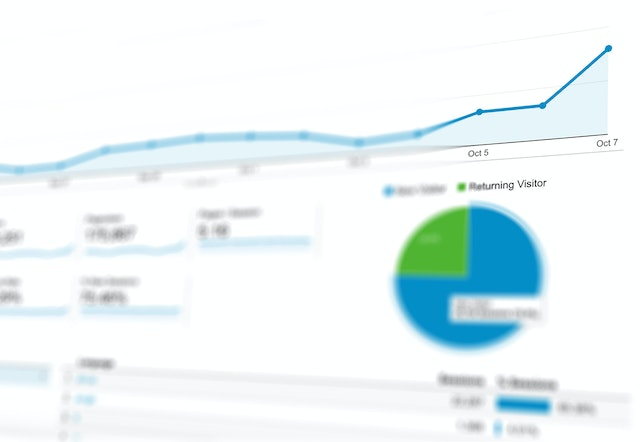You’ve finally decided to take the plunge and start a blog. Congratulations! This is a fantastic decision that will no doubt lead to new opportunities, insights, and connections. But now that you’ve made this decision, you might be feeling a bit overwhelmed. After all, there’s a lot that goes into starting and maintaining a successful blog. Where do you even begin?
One option is to hire a blogging coach. A blogging coach can provide you with the guidance and support you need to turn your blog into a success. They can help you develop a plan, choose a niche, come up with content ideas, promote your blog, and much more. In short, a blogging coach can be a lifesaver for anyone who wants to start a blog but doesn’t know where to begin.
Of course, whether or not you need a blogging coach is ultimately up to you. If you’re feeling confident and have a clear vision for your blog, then you might not need one. But if you’re uncertain about what you’re doing or feel like you could use some help, then working with a coach might be the best decision you ever make.

1. What is a Blogging Coach and what do they do?
A blogging coach is someone who helps you navigate the ever-changing landscape of the internet. Whether you’re just getting started or you’ve been blogging for years, a coach can help you find your voice, hone your message, and reach your audience. In addition to offering guidance and support, a blogging coach can also provide valuable feedback and help you troubleshoot when things go wrong.
In short, a blogging coach is your ally in the quest to build a successful online presence. So if you’re feeling lost in the world of blogging, don’t despair! A coach can help you get back on track and achieve your goals.
2. How can a Blogging Coach help you
Let’s face it, we’ve all been there. You start a blog with the best of intentions, but after a few months (or even weeks), you find yourself struggling to come up with new ideas, drive traffic to your site, or even keep up with the posting schedule you originally set for yourself. That’s where a blogging coach can help.
A good coach will work with you to identify your goals for your blog and develop a plan to help you achieve them. They can also provide guidance on topics, help you develop a strong voice, and teach you how to market your blog effectively. In short, a blogging coach can be an invaluable resource for anyone looking to take their blog to the next level.

3. What to look for when hiring a Blogging Coach
Are you thinking about hiring a blogging coach? Here are a few things to keep in mind:
-
First, make sure that the coach is someone you can trust. This is important because you will be sharing your innermost thoughts and feelings with this person. Look for someone who is down-to-earth and easy to talk to.
-
Second, make sure that the coach is knowledgeable about the blogging world. There’s no point in paying someone for advice if they don’t know what they’re talking about. Ask around and see if anyone can recommend a good coach.
-
Third, make sure that the coach is affordable. Remember, you’re not just paying for advice; you’re also paying for the coach’s time. Make sure that the price is something you can afford without breaking the bank.
-
The fourth and final thing to consider is whether or not the coach offers a money-back guarantee. This shows that the coach is confident in their ability to help you improve your blog. If they don’t offer a money-back guarantee, move on to someone else.
Hiring a blogging coach can be a great way to take your blog to the next level. Just be sure to keep these four things in mind when making your decision.

4. The benefits of working with a Blogging Coach
If you have a blog or are thinking about starting one, you may be wondering whether or not working with a blogging coach is worth it. Here are some benefits of having a blogging coach in your corner:
1. A blogging coach can help you hone your writing skills. Whether you’re struggling with writer’s block or just want to take your blog to the next level, a coach can help you reach your goals.
2. A blogging coach can provide valuable feedback on your work. It can be helpful to get an outsider’s perspective on your writing, and a coach can offer constructive criticism that will help you improve.
3. A blogging coach can help you develop a successful blog strategy. From finding your niche to promoting your blog, a coach can advise you on how to make your blog successful.
4. A blogging coach can hold you accountable. If you’re having trouble sticking to a posting schedule or meeting your goals, a coach can help you stay on track.
Working with a blogging coach can be incredibly beneficial, whether you’re just getting started or looking to take your blog to the next level. If you’re serious about making your blog a success, consider investing in the help of a professional coach.

My Blogging Coach Checklist:
-
Buy a domain and hosting
-
Get a logo
-
Install WordPress
-
Install a theme
-
Install must have plugins
-
Research keywords
-
Write content
-
Create a flag ship free product
-
Collect emails
-
Create a newsletter
Buy a domain and hosting
A domain is like your home on the internet. It’s how people find you online and it’s your unique identity. Even if you don’t plan on having a website today, buying a domain is a great way to invest in your future.
Just like with anything else in life, there are a lot of different options when it comes to domains and hosting. Deciding on the right one can be tricky, but we’re here to help!
Our top pick for domain registrars is GoDaddy. They’re the largest domain registrar in the world and they offer a wide variety of features at a great price. Plus, their customer service is excellent.
If you’re looking for something a little more budget-friendly, Namecheap is a great option. They don’t have all the bells and whistles that GoDaddy does, but they’re still a solid registrar.
As for hosting, we recommend SiteGround. They’re one of the most popular hosting providers out there and they offer fantastic speed and uptime, plus great customer service. If you’re looking for something a bit cheaper, Bluehost is a good option.
They’re not quite as fast or reliable as SiteGround, but they’re still a great choice for small websites. And that’s it! Those are our picks for the best domain registrars and hosting providers. Now it’s time to get started building your dream website!

Get a logo
A brand logo is one of the most important pieces of marketing collateral your business will ever create. Think of it as the face of your company – it’s what customers will associate with your brand, and it will be used on everything from your website to your business cards. Creating a strong, distinctive logo is essential to building a successful brand. But where do you start? The process can be daunting, but there are a few simple steps you can follow to help ensure your logo turns out just the way you want it.
First, think about what you want your logo to say about your brand. What are your core values? What message do you want to communicate? Once you have a clear idea of what you’re trying to achieve, you can start exploring different design options. Look at other logos in your industry for inspiration, and try to find a style that reflects your brand personality.
Once you’ve settled on a general direction, it’s time to start playing around with concepts and visuals. Keep in mind that the best logos are often the simplest – don’t overcomplicate things! When you’ve got a few strong contenders, show them to some trusted friends or colleagues and get their feedback. And finally, once you’ve landed on a winner, make sure to get the files in all the right formats so you can use it wherever and however you need.
With a little effort, you’ll end up with a logo that’s perfect for your business – and that customers will love.

Install WordPress
So you want to start a blog or build a website? Congratulations! WordPress is a great platform to use, and it’s honestly pretty easy to install. However, there are still a few steps you need to take before you can start publishing content. Here’s a quick guide to help you get started:
1. First, you’ll need to download WordPress from wordpress.org.
2. Once you have the WordPress files on your computer, create a new database for WordPress on your web host.
3. Next, upload the WordPress files to your web server using FTP.
4. Now that the files are in place, visit your website in a web browser and follow the instructions to complete the installation.
5. Once the installation is complete, you can login to your WordPress dashboard and start creating content!
That’s all there is to it!
Install a theme
If you’re looking to give your WordPress site a fresh new look, installing a theme is a great way to do it. But with literally thousands of themes available, choosing the right one can be a daunting task. To help you out, we’ve compiled a list of our favorite WordPress themes.
Whether you’re looking for a simple blog theme or a complex, multi-purpose theme, we’re sure you’ll find something on our list that suits your needs. So without further ado, here are our top picks for the best WordPress themes:
-
Divi
-
Avada
-
Enfold
-
Genesis Framework
-
Bridge
-
Beaver Builder Theme
-
Salient
-
The7
-
Schema
-
Approach
-
OptimizePress
-
Ultimatum
-
Spun
-
1622Pro
Install must-have plugins
If you’re a WordPress user, chances are you’ve used a plugin or two (or fifty). Plugins are great for adding extra features to your site without having to mess with code. And while there are plugins for just about everything these days, there are a few essential plugins that every WordPress blogger should have in their toolkit.
First on the list is Jetpack. This plugin is a true Swiss Army Knife of blogging tools, providing everything from social media integration to security and performance enhancements. If you’re serious about blogging, Jetpack is a must-have.
Another essential plugin is Yoast SEO. This plugin helps you to optimize your blog posts for search engines, making it easier for people to find your content. Yoast SEO also includes features like keyword research and readability analysis, so it’s perfect for bloggers who want to get serious about SEO.
Finally, no WordPress blog would be complete without an email opt-in form. Aweber’s WordPress plugin makes it easy to add beautiful email signup forms to your site, so you can grow your list of subscribers with ease. Whether you’re just starting out or you’re a seasoned pro, these three plugins are essential for any WordPress blogger.

Research keywords
Are you a blogger who’s looking for ideas on what to write about? Or maybe you’re just getting started and aren’t sure what keywords to use to get your blog found by search engines. Either way, research is key! Here are a few tips on how to select the best keywords for your blog:
1. Start with brainstorming. Make a list of potential topics and key phrases that relate to your niche.
2. Check out what others in your niche are blogging about. See what keywords they’re using and get some ideas from their content.
3. Use a keyword research tool like Google AdWords Keyword Planner or WordStream’s Free Keyword Tool to find popular keywords that people are searching for.
4. Once you’ve selected a few potential keywords, try them out in your blog title and see how they look. Make sure they’re relevant to your topic and flow well with the rest of your title.
5. And last but not least, don’t forget to use alt tags! Whenever you upload an image to your blog, be sure to include relevant keywords in the alt text so that people can find your blog when they’re searching for those terms.
Following these tips should help you select the best keywords for your blog so that you can attract more readers and get found in search engines! Happy blogging!
Write content
If you’re like most people, you probably start your day by checking your email, skimming through your favorite websites, and reading the news. But what if, instead of starting your day with someone else’s content, you started it with your own? Writing for your blog is a great way to share your thoughts and ideas with the world, and it can also be a fun and rewarding way to connect with others who share your interests. And best of all, it’s easy to get started! Here are a few tips to help you write content for your blog:
Find your voice:
The first step to writing great content for your blog is finding your voice. What do you want to say? What kind of tone do you want to strike? Be yourself, and let your personality shine through in your writing.
Choose interesting topics:
No one wants to read a blog post about someone’s shopping trip or what they had for dinner. Instead, choose topics that are interesting and engaging. Write about something you’re passionate about, or share something new and exciting that you’ve learned.
Be concise:
When people are reading online, they’re looking for information that is clear and to the point. So make sure that your posts are easy to read and free of fluff. Get straight to the point, and don’t be afraid to edit out any unnecessary information.
Keep it updated:
One of the worst things you can do is start a blog and then let it fall by the wayside. If you want people to keep coming back, make sure to update regularly with new content. Aim for at least one new post per week, but more often is better.
By following these tips, you’ll be well on your way to writing great content for your blog!
Create a free flag ship product
There’s no need to spend a lot of money on a flagship product when you can create one for free! Just follow these simple steps:
1. Find an existing product that you can improve upon. This could be something that you use in your everyday life or something that you’ve always wanted but never had the chance to try.
2. Make a list of the features that you would like to see in your ideal product.
3. Research how to create those features. This may involve reading tutorials, watching videos, or experimenting with different materials.
4. Put together your final product and enjoy! Remember, it doesn’t have to be perfect – it just has to be yours.

Collect emails
If you’re like most bloggers, you’re always looking for ways to grow your audience. One of the most effective ways to do this is to collect emails from your readers. This way, you can stay in touch with your fans and let them know when you’ve published new content. And, of course, you can also use your email list to promote your latest products and services.
But how do you actually go about collecting emails from your blog? The first step is to create a sign-up form that encourages visitors to join your list. You can put this form on your blog’s sidebar, on individual posts, or even on your contact page. Once you’ve created your form, be sure to promote it regularly so that people actually see it and sign up. You can do this by adding a call-to-action at the end of each post, or by creating a dedicated email capture page.
Collecting emails from your blog doesn’t have to be difficult. With a little effort, you can quickly build up a valuable list of subscribers who will appreciate hearing from you on a regular basis.
Create a newsletter
One of the most effective ways to stay in touch with your customers is to send them a newsletter. But how do you go about creating a newsletter that will actually get read? Here are a few tips:
Keep it short and sweet. Customers are more likely to read a newsletter that is brief and to the point. So don’t try to cram too much information into each issue.
Make it visually appealing. Use plenty of images and white space to break up the text. And make sure your email template is mobile-friendly, so it looks good on any device.
Include something for everyone. Think about what your customers would find useful or interesting, and include articles, tips, and discounts accordingly.
Use an engaging subject line. Your subject line is your chance to make a good first impression, so make it count! Keep it short and punchy, and avoid using generic terms like “newsletter” or “update.”
By following these tips, you can create a newsletter email that will actually get read by your customers. And that’s sure to keep them coming back for more.
Example:
Welcome to the first issue of the [BLOG NAME] newsletter! This is a monthly publication where we round up all the latest news, posts, and developments from the blog. Here’s what we’ve been up to this month:
[RECENT HAPPENINGS ON THE BLOG]
As always, we want to hear from you! If you have any questions, comments, or suggestions, feel free to reach out to us at [EMAIL ADDRESS]. We hope you enjoy this first issue of the newsletter, and thanks for reading!
Conclusion:
There are a lot of different reasons why you might need a blogging coach. Maybe you’re just starting out and you need some help getting organized. Or maybe you’ve been blogging for a while but you’re not seeing the results you want. Either way, coaching can give you the guidance and accountability you need to reach your goals.
Last thing:
Most people start off blogging because they want to create a second stream of income. Believe me you will get there. However, I think it is important to know that this is not a race. Blogging is like planting a tree. At first it is a seed in the ground. You start to water it not knowing if anything is happening. Then one day like magic, a sprout pops out of the ground. From there you become so excited and you want it to grow into a huge red oak overnight. But the tree is growing on its schedule. It will need water every few days to survive. Just like this tree, your blog will ground into something wonderful. Just give it time.

